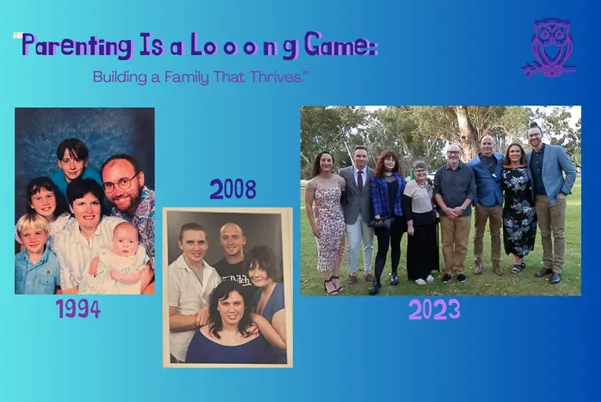
Parenting Is a Long Game — Building a Family That Thrives
One of the biggest lessons I’ve learned — both as a mother and a mentor — is that parenting isn’t a sprint. It’s a long game.
It’s not about perfection. It’s about direction.
When we focus on the family we want to become, rather than the behaviours we’re trying to fix, we start building something that lasts: emotional safety, mutual respect, and a sense of belonging for everyone.
Here’s how to begin.
1. Start With Vision, Not Rules
Instead of jumping to “what needs fixing,” gather your family for a conversation about what you’d love your home to feel like.
Ask questions like:
How do we want to treat each other?
What makes a home feel like a safe place?
What would it look like if we were thriving?
Write it down. Having a shared vision anchors you during the tough days when old patterns creep in.
2. Remember, Growth Takes Time
Change isn’t instant. When you imagine the kind of family you want, you’re setting an aspirational target — not a test.
Ask yourself: Who do we need to become to create this culture?
That question shifts your focus from blame to growth.
If there’s bickering or disconnection, look underneath the behaviour:
Value: “We appreciate each other’s differences.”
Standard: “When we disagree, we do so respectfully.”
Belief: “Even when there’s conflict, we can always repair.”
This is how secure attachment is modelled — not by avoiding conflict, but by repairing after it.
3. Let Go of the Past
We can’t create something new while clinging to what used to be.
Maybe your childhood was marked by silence or control. Maybe your parents didn’t know how to regulate or apologise.
You get to change that story.
When we release the past, we create space for new ways of being — ways that honour both our children’s needs and our own.
4. Build Scaffolding for Success
New habits need structure. Think of it like setting up training wheels while everyone learns to ride together.
Try:
A short weekly family check-in — “How are we going as a team?”
A “family manifesto” on the fridge — visible reminders of your shared values.
Visual charts or agreements for younger kids who need concrete structure.
The goal isn’t perfection — it’s practice.
5. Use Language That Builds Connection
Our words shape our relationships.
When emotions run high, especially with strong-willed or neurodivergent children, our tone can make all the difference.
Instead of “You shouldn’t say that,” try:
“It sounds like you’re really upset right now. That’s okay. Let’s find another way to say what you mean.”
Validate first. Empathise second. Be curious third.
(VEC — it’s the heart of emotional attunement.)
The more we help our kids express their feelings safely, the stronger their trust grows.
6. Love More, Judge Less
Assume best intentions — even when the behaviour looks ugly.
Our children aren’t giving us a hard time; they’re having a hard time.
When we can stay calm and lead with compassion, we show them what emotional safety feels like. That’s what builds their capacity for empathy, self-regulation, and self-worth.
7. Reflect and Repair
Take time to reflect — not just on what went wrong, but on what you’re learning.
Ask:
What worked well this week?
Where did I lose my footing, and how can I repair?
You don’t need to be perfect to be powerful. You only need to be willing to repair.
8. Keep Your Eyes on What Matters Most
When the house is loud, the days are long, and emotions are messy — remember what truly matters.
It’s not a tidy kitchen or a well-behaved child. It’s connection.
Parenting is a long game. We’re not managing children — we’re raising adults.
The more we model curiosity, accountability, and grace, the more we build a family that thrives.
Next Step
If this message resonates, I invite you to join me for my upcoming Transforming Attachment Webinar — where I’ll guide you through practical ways to strengthen connection, close the gap of misattunement, and help your family flourish from the inside out.